Cover
Title
Copyright
Contents
Preface
Contributors
Part I Introduction to Applied Mathematics
I.1 What Is Applied Mathematics?
I.2 The Language of Applied Mathematics
I.3 Methods of Solution
I.4 Algorithms
I.5 Goals of Applied Mathematical Research
I.6 The History of Applied Mathematics
Part II Concepts
II.1 Asymptotics
II.2 Boundary Layer
II.3 Chaos and Ergodicity
II.4 Complex Systems
II.5 Conformal Mapping
II.6 Conservation Laws
II.7 Control
II.8 Convexity
II.9 Dimensional Analysis and Scaling
II.10 The Fast Fourier Transform
II.11 Finite Differences
II.12 The Finite-Element Method
II.13 Floating-Point Arithmetic
II.14 Functions of Matrices
II.15 Function Spaces
II.16 Graph Theory
II.17 Homogenization
II.18 Hybrid Systems
II.19 Integral Transforms and Convolution
II.20 Interval Analysis
II.21 Invariants and Conservation Laws
II.22 The Jordan Canonical Form
II.23 Krylov Subspaces
II.24 The Level Set Method
II.25 Markov Chains
II.26 Model Reduction
II.27 Multiscale Modeling
II.28 Nonlinear Equations and Newton’s Method
II.29 Orthogonal Polynomials
II.30 Shocks
II.31 Singularities
II.32 The Singular Value Decomposition
II.33 Tensors and Manifolds
II.34 Uncertainty Quantification
II.35 Variational Principle
II.36 Wave Phenomena
Part III Equations, Laws, and Functions of Applied Mathematics
III.1 Benford’s Law
III.2 Bessel Functions
III.3 The Black–Scholes Equation
III.4 The Burgers Equation
III.5 The Cahn–Hilliard Equation
III.6 The Cauchy–Riemann Equations
III.7 The Delta Function and Generalized Functions
III.8 The Diffusion Equation
III.9 The Dirac Equation
III.10 Einstein’s Field Equations
III.11 The Euler Equations
III.12 The Euler–Lagrange Equations
III.13 The Gamma Function
III.14 The Ginzburg–Landau Equation
III.15 Hooke’s Law
III.16 The Korteweg–de Vries Equation
III.17 The Lambert W Function
III.18 Laplace’s Equation
III.19 The Logistic Equation
III.20 The Lorenz Equations
III.21 Mathieu Functions
III.22 Maxwell’s Equations
III.23 The Navier–Stokes Equations
III.24 The Painlevé Equations
III.25 The Riccati Equation
III.26 Schrödinger’s Equation
III.27 The Shallow-Water Equations
III.28 The Sylvester and Lyapunov Equations
III.29 The Thin-Film Equation
III.30 The Tricomi Equation
III.31 The Wave Equation
Part IV Areas of Applied Mathematics
IV.1 Complex Analysis
IV.2 Ordinary Differential Equations
IV.3 Partial Differential Equations
IV.4 Integral Equations
IV.5 Perturbation Theory and Asymptotics
IV.6 Calculus of Variations
IV.7 Special Functions
IV.8 Spectral Theory
IV.9 Approximation Theory
IV.10 Numerical Linear Algebra and Matrix Analysis
IV.11 Continuous Optimization (Nonlinear and Linear Programming)
IV.12 Numerical Solution of Ordinary Differential Equations
IV.13 Numerical Solution of Partial Differential Equations
IV.14 Applications of Stochastic Analysis
IV.15 Inverse Problems
IV.16 Computational Science
IV.17 Data Mining and Analysis
IV.18 Network Analysis
IV.19 Classical Mechanics
IV.20 Dynamical Systems
IV.21 Bifurcation Theory
IV.22 Symmetry in Applied Mathematics
IV.23 Quantum Mechanics
IV.24 Random-Matrix Theory
IV.25 Kinetic Theory
IV.26 Continuum Mechanics
IV.27 Pattern Formation
IV.28 Fluid Dynamics
IV.29 Magnetohydrodynamics
IV.30 Earth System Dynamics
IV.31 Effective Medium Theories
IV.32 Mechanics of Solids
IV.33 Soft Matter
IV.34 Control Theory
IV.35 Signal Processing
IV.36 Information Theory
IV.37 Applied Combinatorics and Graph Theory
IV.38 Combinatorial Optimization
IV.39 Algebraic Geometry
IV.40 General Relativity and Cosmology
Part V Modeling
V.1 The Mathematics of Adaptation (Or the Ten Avatars of Vishnu)
V.2 Sport
V.3 Inerters
V.4 Mathematical Biomechanics
V.5 Mathematical Physiology
V.6 Cardiac Modeling
V.7 Chemical Reactions
V.8 Divergent Series: Taming the Tails
V.9 Financial Mathematics
V.10 Portfolio Theory
V.11 Bayesian Inference in Applied Mathematics
V.12 A Symmetric Framework with Many Applications
V.13 Granular Flows
V.14 Modern Optics
V.15 Numerical Relativity
V.16 The Spread of Infectious Diseases
V.17 The Mathematics of Sea Ice
V.18 Numerical Weather Prediction
V.19 Tsunami Modeling
V.20 Shock Waves
V.21 Turbulence
Part VI Example Problems
VI.1 Cloaking
VI.2 Bubbles
VI.3 Foams
VI.4 Inverted Pendulums
VI.5 Insect Flight
VI.6 The Flight of a Golf Ball
VI.7 Automatic Differentiation
VI.8 Knotting and Linking of Macromolecules
VI.9 Ranking Web Pages
VI.10 Searching a Graph
VI.11 Evaluating Elementary Functions
VI.12 Random Number Generation
VI.13 Optimal Sensor Location in the Control of Energy-Efficient Buildings
VI.14 Robotics
VI.15 Slipping, Sliding, Rattling, and Impact: Nonsmooth Dynamics and Its Applications
VI.16 From the N-Body Problem to Astronomy and Dark Matter
VI.17 The N-Body Problem and the Fast Multipole Method
VI.18 The Traveling Salesman Problem
Part VII Application Areas
VII.1 Aircraft Noise
VII.2 A Hybrid Symbolic–Numeric Approach to Geometry Processing and Modeling
VII.3 Computer-Aided Proofs via Interval Analysis
VII.4 Applications of Max-Plus Algebra
VII.5 Evolving Social Networks, Attitudes, and Beliefs—and Counterterrorism
VII.6 Chip Design
VII.7 Color Spaces and Digital Imaging
VII.8 Mathematical Image Processing
VII.9 Medical Imaging
VII.10 Compressed Sensing
VII.11 Programming Languages: An Applied Mathematics View
VII.12 High-Performance Computing
VII.13 Visualization
VII.14 Electronic Structure Calculations (Solid State Physics)
VII.15 Flame Propagation
VII.16 Imaging the Earth Using Green’s Theorem
VII.17 Radar Imaging
VII.18 Modeling a Pregnancy Testing Kit
VII.19 Airport Baggage Screening with X-Ray Tomography
VII.20 Mathematical Economics
VII.21 Mathematical Neuroscience
VII.22 Systems Biology
VII.23 Communication Networks
VII.24 Text Mining
VII.25 Voting Systems
Part VIII Final Perspectives
VIII.1 Mathematical Writing
VIII.2 How to Read and Understand a Paper
VIII.3 How to Write a General Interest Mathematics Book
VIII.4 Workflow
VIII.5 Reproducible Research in the Mathematical Sciences
VIII.6 Experimental Applied Mathematics
VIII.7 Teaching Applied Mathematics
VIII.8 Mediated Mathematics: Representations of Mathematics in Popular Culture and Why These Matter
VIII.9 Mathematics and Policy
Index
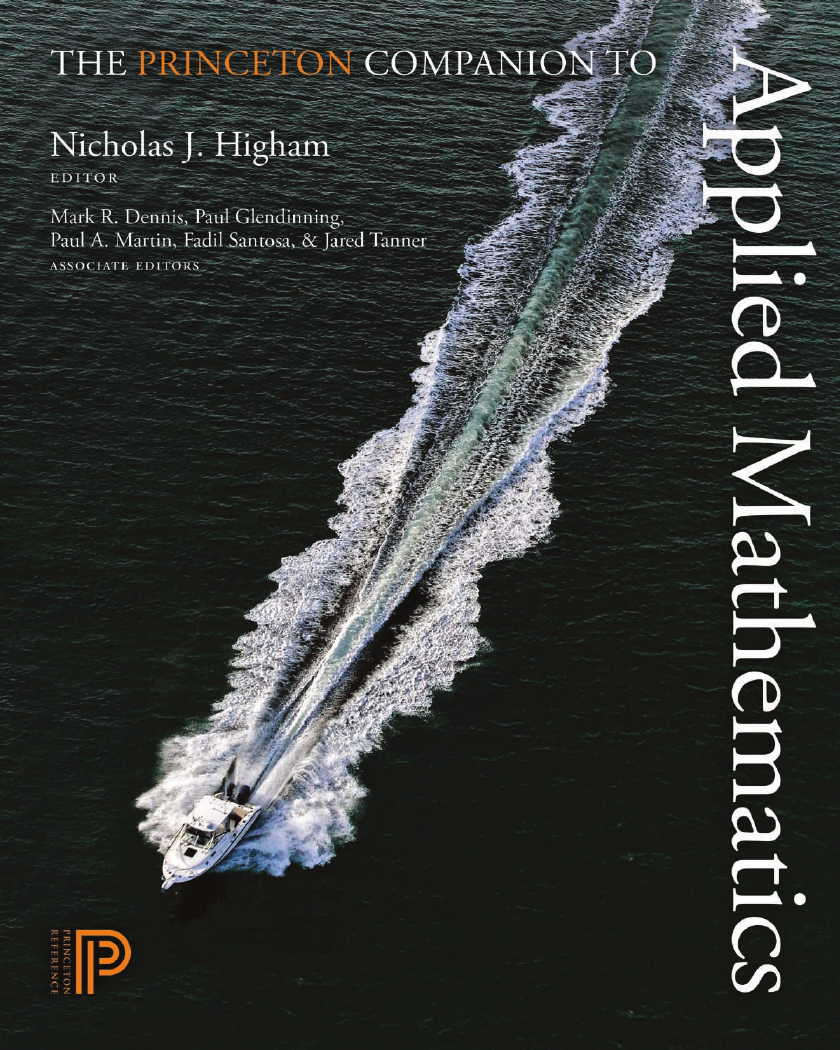
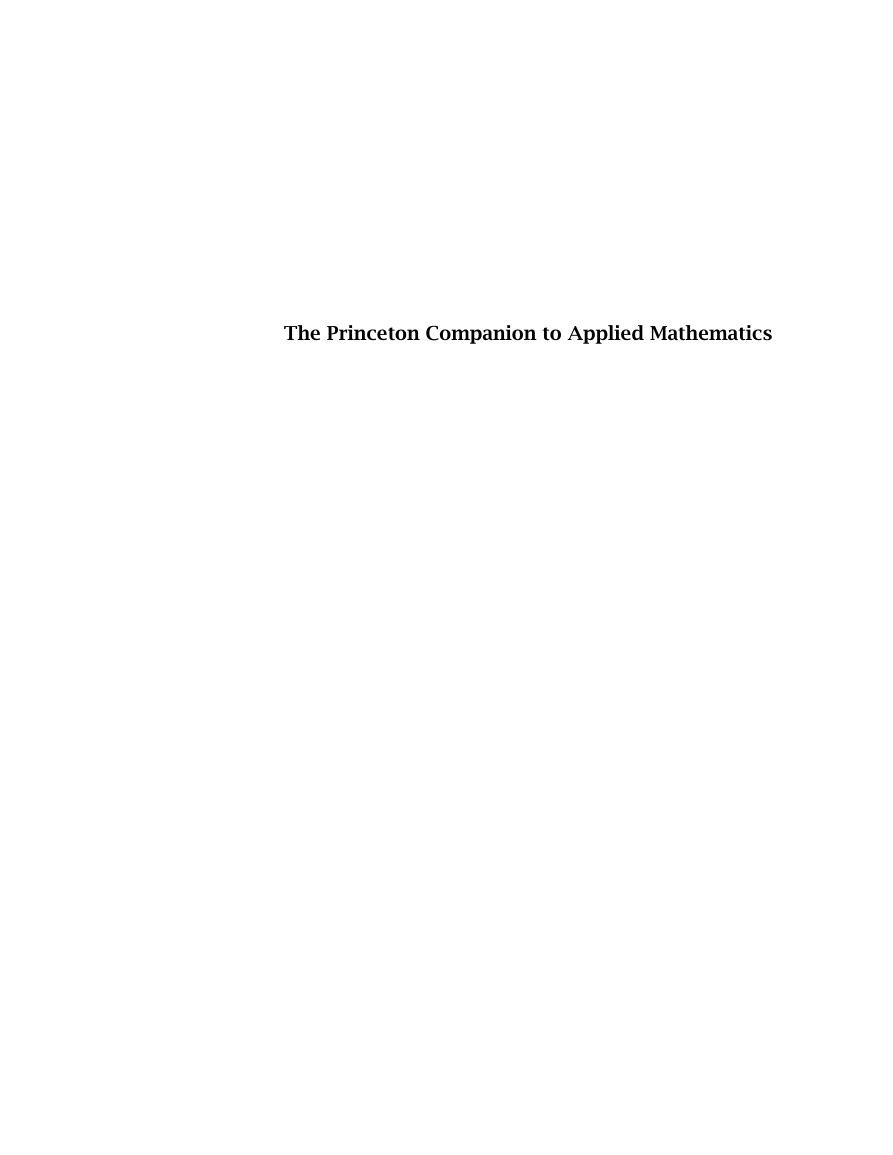

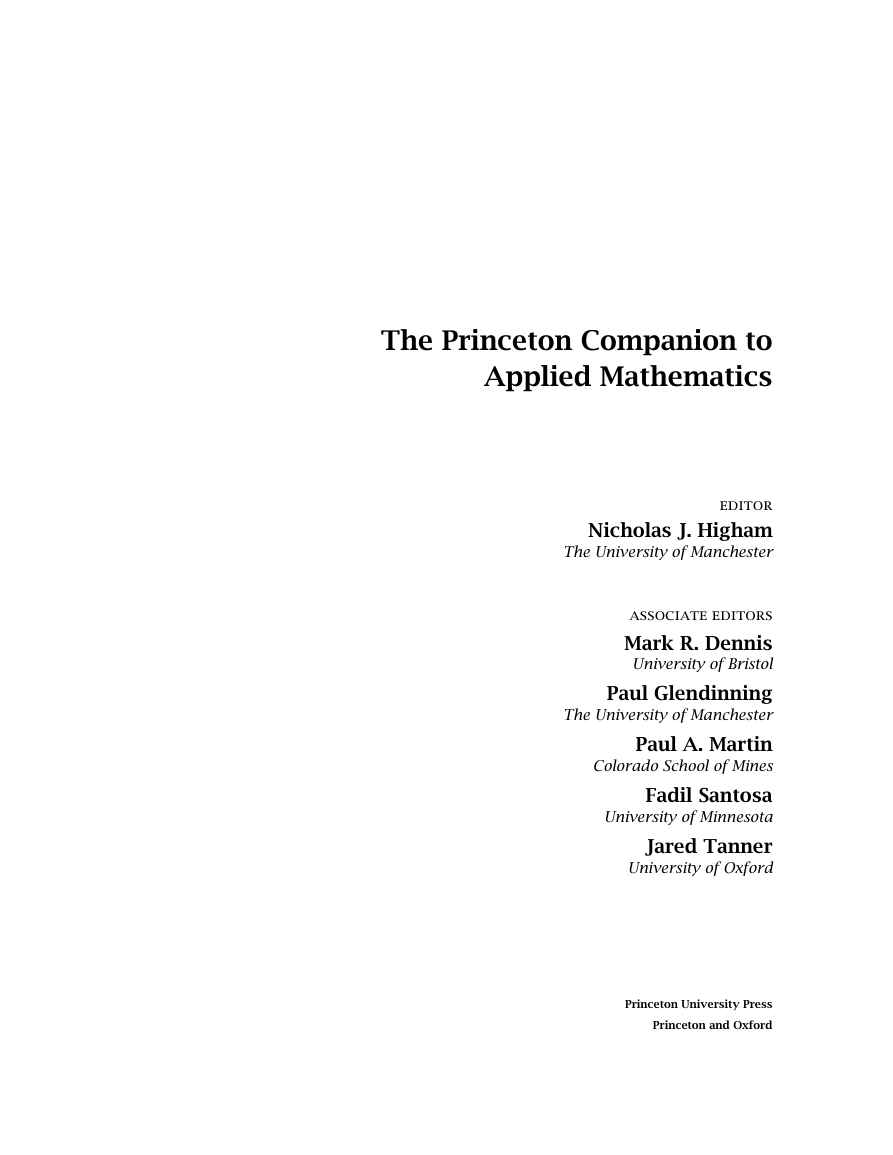
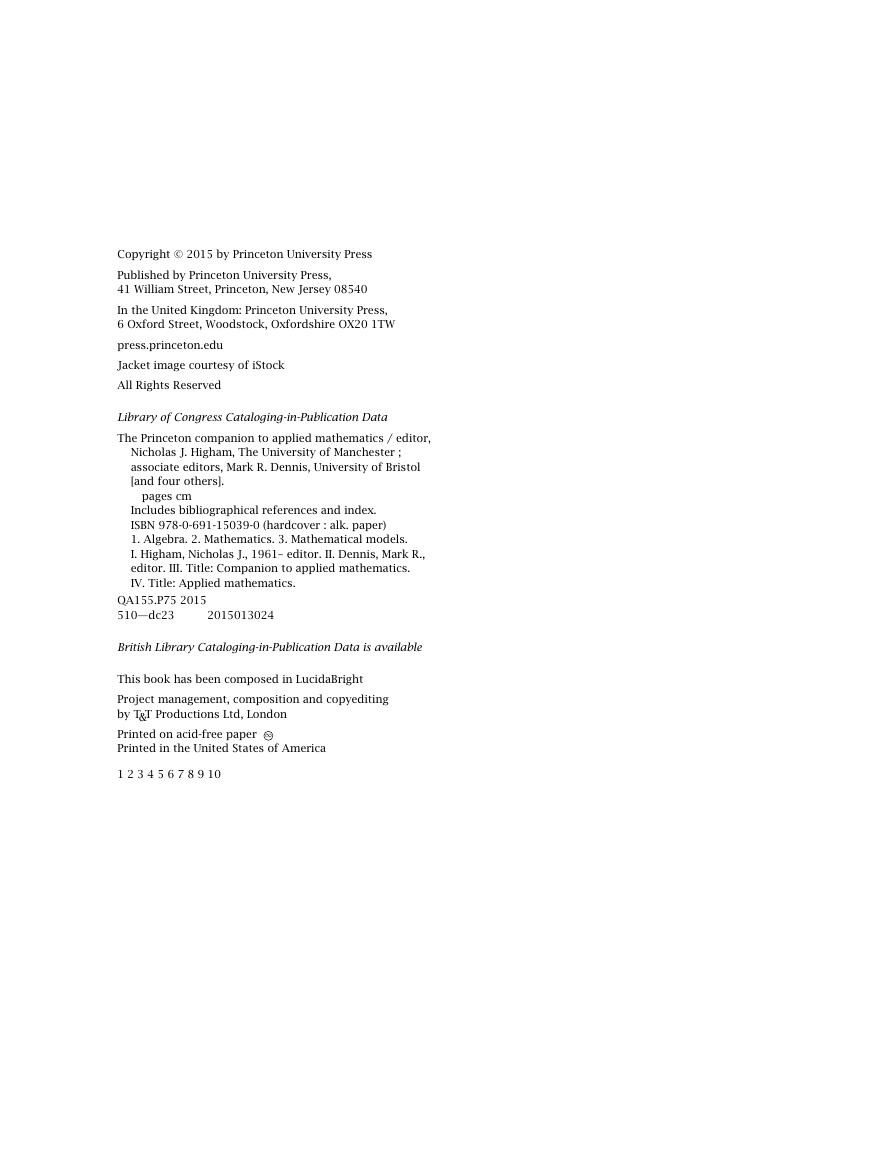

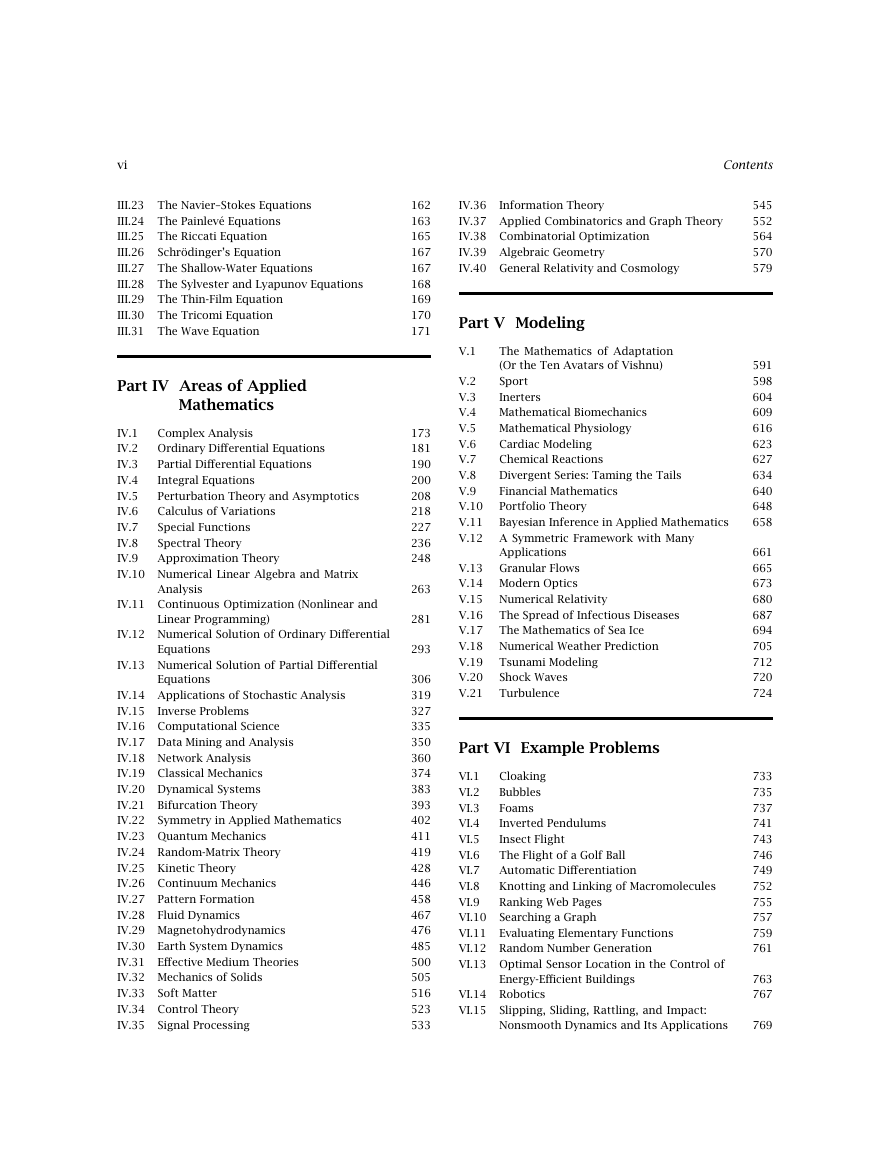









 2023年江西萍乡中考道德与法治真题及答案.doc
2023年江西萍乡中考道德与法治真题及答案.doc 2012年重庆南川中考生物真题及答案.doc
2012年重庆南川中考生物真题及答案.doc 2013年江西师范大学地理学综合及文艺理论基础考研真题.doc
2013年江西师范大学地理学综合及文艺理论基础考研真题.doc 2020年四川甘孜小升初语文真题及答案I卷.doc
2020年四川甘孜小升初语文真题及答案I卷.doc 2020年注册岩土工程师专业基础考试真题及答案.doc
2020年注册岩土工程师专业基础考试真题及答案.doc 2023-2024学年福建省厦门市九年级上学期数学月考试题及答案.doc
2023-2024学年福建省厦门市九年级上学期数学月考试题及答案.doc 2021-2022学年辽宁省沈阳市大东区九年级上学期语文期末试题及答案.doc
2021-2022学年辽宁省沈阳市大东区九年级上学期语文期末试题及答案.doc 2022-2023学年北京东城区初三第一学期物理期末试卷及答案.doc
2022-2023学年北京东城区初三第一学期物理期末试卷及答案.doc 2018上半年江西教师资格初中地理学科知识与教学能力真题及答案.doc
2018上半年江西教师资格初中地理学科知识与教学能力真题及答案.doc 2012年河北国家公务员申论考试真题及答案-省级.doc
2012年河北国家公务员申论考试真题及答案-省级.doc 2020-2021学年江苏省扬州市江都区邵樊片九年级上学期数学第一次质量检测试题及答案.doc
2020-2021学年江苏省扬州市江都区邵樊片九年级上学期数学第一次质量检测试题及答案.doc 2022下半年黑龙江教师资格证中学综合素质真题及答案.doc
2022下半年黑龙江教师资格证中学综合素质真题及答案.doc